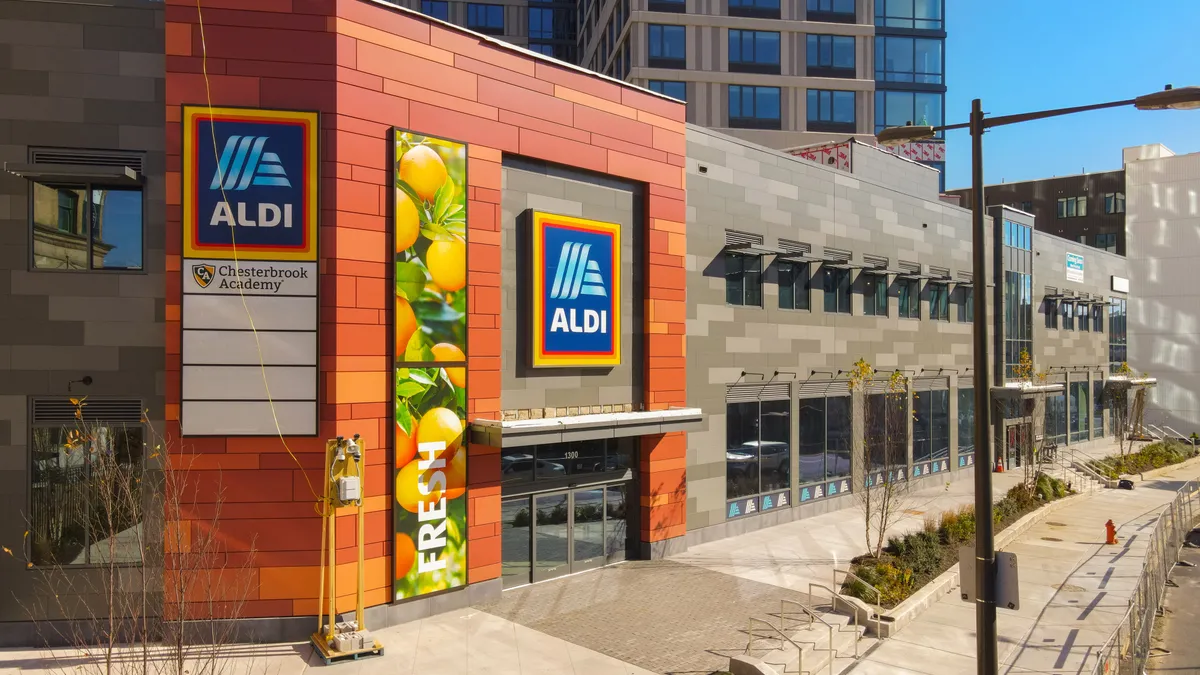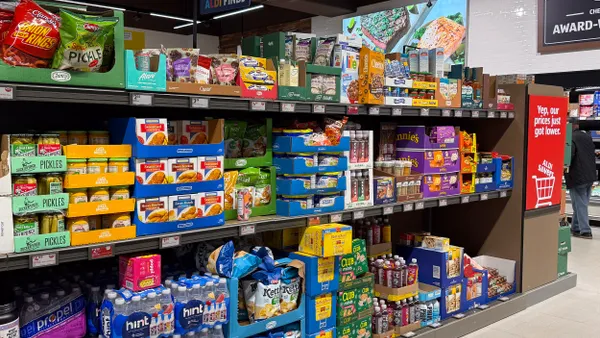Dive Brief:
- Aldi plans to add 800 stores across the United States through a combination of new openings and store conversions by the end of 2028, the company announced Thursday.
- The discount chain will invest more than $9 billion over the next five years and intends to strengthen its presence in the Northeast, Midwest and West Coast while also moving into areas where it doesn’t currently have a presence.
- Aldi’s acquisition of Southeastern Grocers’ Winn-Dixie and Harveys Supermarket banners last year will play a vital role in the company’s anticipated rapid growth.
Dive Insight:
Seven years ago, Aldi laid out a plan for its U.S. growth that included a $5 billion total capital investment to increase its store count and remodel stores. Now, the company has laid out its next growth phase with an even more ambitious plan that builds on its success in expanding to new markets, refreshing its stores and connecting with price-conscious consumers.
The expansion plan entails opening stores in new regions as well as ones where it currently operates. In the Northeast and Midwest, it plans to add close to 330 stores by the end of 2028. It also plans to add stores in Southern California and Phoenix — a market it entered within the past few years.
Aldi said it will also open stores in new cities like Las Vegas.
“The announcement that it will open 800 new US stores by the end of 2028 is Aldi throwing down the gauntlet to traditional grocery players. In our view, it is a major challenge to the market which could cause significant disruption and pain for other retailers,” wrote GlobalData Managing Director Neil Saunders in emailed comments Thursday morning.
Aldi has made no secret of its ambitions to disrupt traditional grocers. Its boldest move to that end came last summer when it agreed to acquire Winn-Dixie and Harveys Supermarkets from Southeastern Grocers. On Thursday, Aldi said it plans to convert a “significant” number of those stores over to the Aldi brand. It will begin a phased approach to store conversions this summer, with around 50 stores planned to undergo remodeling work. The majority of those stores will reopen as Aldi locations in 2025.
What’s not clear is how Aldi plans to address the size discrepancy between Winn-Dixie and Harveys stores and current Aldi locations. Aldi’s stores average around 22,000 square feet, while Winn-Dixie’s stores are more than twice that size, averaging around 48,000 square feet andHarveys’ locations average just over 36,000, according to a 2021 regulatory filing.
Aldi noted Thursday that it has closed its acquisition of Southeastern Grocers and its Winn-Dixie and Harveys banners.
Aldi has been in the U.S. since 1976 and operated fairly quietly until recently when it seized the opportunity to expand and upgrade its stores. Aldi has refreshed its stores with brighter lighting, more colorful signage, new floor layouts and an enhanced product mix that focuses on low-price specialty goods in addition to household staples. It outlined plans to open 120 stores last year and operate more than 2,400 locations across the U.S., though its website notes it is just shy of that total number.
In addition to its store expansion and updates, Aldi has been adding self-checkout kiosks to its stores and has been operating a fully automated checkout system at a store located near its headquarters in suburban Chicago.














